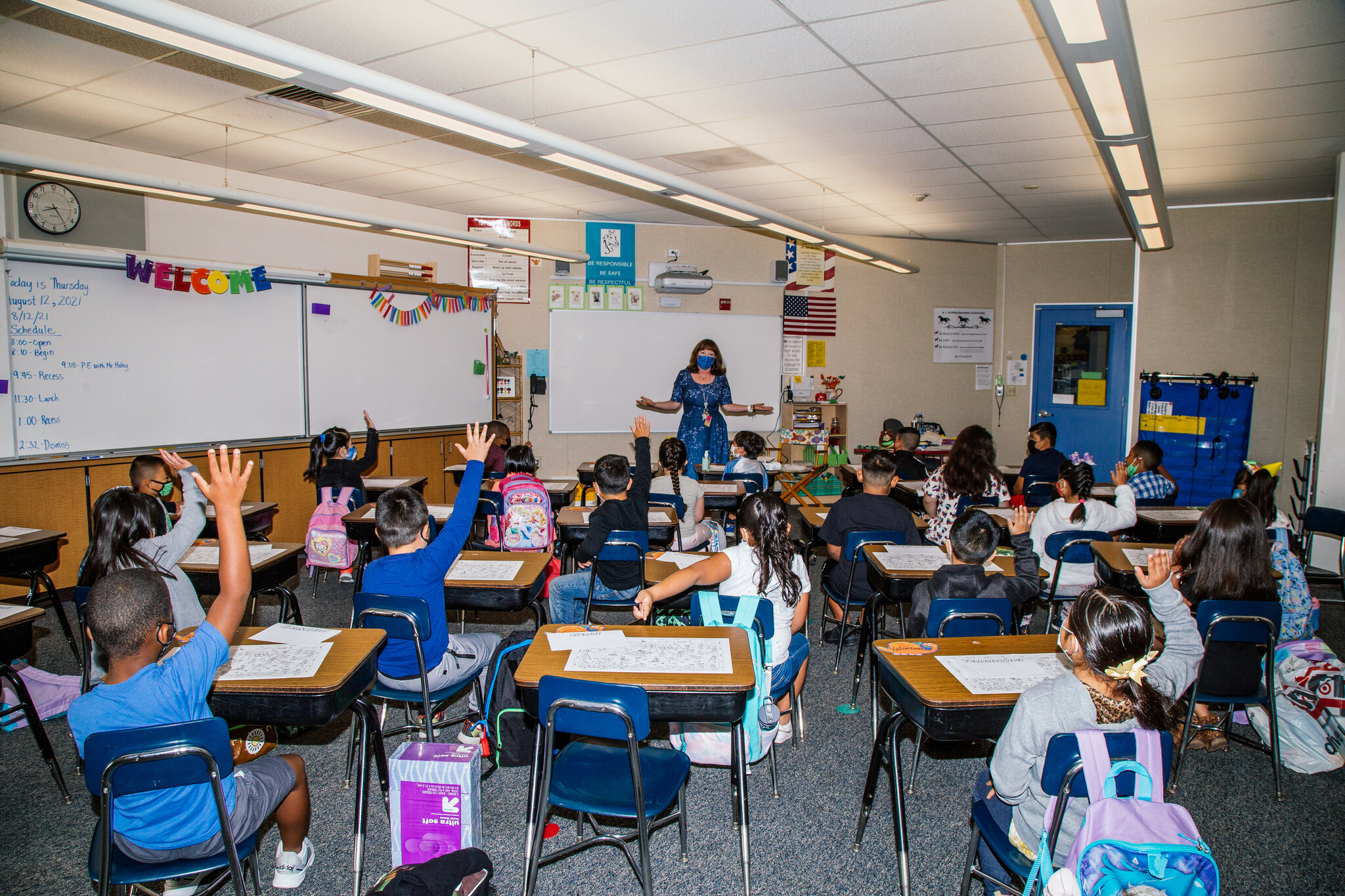Navigating Education Reforms: Overcoming Pandemic Challenges
Introduction:
Education reforms are essential for ensuring that students receive a quality education that prepares them for the challenges of the future. However, the COVID-19 pandemic has presented unprecedented challenges for students worldwide. The sudden shift to remote learning has disrupted traditional education systems and created numerous obstacles for students. From limited access to technology and internet connectivity to the lack of face-to-face interaction and support, students have faced significant challenges in their educational journey. These challenges have highlighted the urgent need for education reforms that address the unique circumstances brought about by the pandemic and ensure equitable access to quality education for all students.
The Impact of Remote Learning on Student Engagement and Academic Performance
The COVID-19 pandemic has brought about significant changes in the education system, with remote learning becoming the new norm for students around the world. While this shift has allowed for continuity in education, it has also presented several challenges for students, particularly in terms of engagement and academic performance.
One of the primary concerns with remote learning is the lack of face-to-face interaction between students and teachers. In a traditional classroom setting, teachers can easily gauge students’ understanding and provide immediate feedback. However, in a virtual environment, this becomes more challenging. Students may feel hesitant to ask questions or seek clarification, leading to a decline in engagement and participation.
Moreover, the absence of a structured learning environment can make it difficult for students to stay motivated and focused. Without the physical presence of teachers and classmates, students may struggle to maintain a routine and manage their time effectively. This can result in decreased productivity and a decline in academic performance.
Another significant challenge faced by students during remote learning is the digital divide. Not all students have access to the necessary technology and internet connectivity required for online classes. This disparity in access to resources can create inequalities in education, with some students being at a disadvantage compared to their peers. Students without reliable internet access may miss out on important lessons and assignments, further impacting their academic progress.
Furthermore, the shift to remote learning has also highlighted the importance of self-discipline and independent learning skills. In a traditional classroom setting, students are guided by their teachers and surrounded by their peers, creating a conducive learning environment. However, in remote learning, students must take more responsibility for their own learning. They need to manage their time effectively, stay organized, and seek help when needed. For some students, this transition can be challenging, leading to a decline in engagement and academic performance.
To address these challenges, educators and policymakers have been implementing various strategies. One approach is to enhance student engagement through interactive online platforms and virtual classroom activities. These tools aim to recreate the collaborative and interactive nature of traditional classrooms, allowing students to actively participate and engage with the material.
Additionally, efforts are being made to bridge the digital divide by providing students with the necessary technology and internet access. Schools and organizations have been distributing laptops, tablets, and internet hotspots to students in need, ensuring that they have equal opportunities for learning.
Furthermore, educators are focusing on promoting self-discipline and independent learning skills among students. They are providing resources and guidance on time management, organization, and effective study techniques. By empowering students to take ownership of their learning, educators hope to improve engagement and academic performance.
In conclusion, the shift to remote learning during the pandemic has had a significant impact on student engagement and academic performance. The lack of face-to-face interaction, the digital divide, and the need for self-discipline are some of the challenges faced by students. However, efforts are being made to address these challenges through interactive online platforms, bridging the digital divide, and promoting independent learning skills. By adapting to these changes and implementing effective strategies, educators aim to ensure that students continue to receive a quality education despite the challenges posed by the pandemic.
Addressing the Digital Divide: Ensuring Access to Education for All Students
Education reforms and challenges faced by students during the pandemic have brought to light the urgent need to address the digital divide and ensure access to education for all students. As schools around the world transitioned to remote learning, it became evident that not all students had equal access to the necessary technology and internet connectivity. This digital divide has exacerbated existing educational inequalities and created new barriers for students from disadvantaged backgrounds.
One of the main challenges in addressing the digital divide is the lack of access to devices such as laptops or tablets. Many students from low-income families do not have their own devices, making it difficult for them to participate in online classes or complete assignments. This has forced schools and governments to take action by providing devices to students in need. However, the demand for devices has far exceeded the available supply, leading to delays and unequal distribution.
Another significant challenge is the lack of reliable internet connectivity. In rural areas or underserved communities, access to high-speed internet is limited or non-existent. This has made it nearly impossible for students in these areas to engage in online learning. To bridge this gap, some schools and organizations have set up Wi-Fi hotspots in community centers or provided mobile data plans to students. However, these solutions are temporary and do not address the long-term need for reliable internet access.
Furthermore, the transition to online learning has highlighted the importance of digital literacy skills. Many students, especially those from older generations or disadvantaged backgrounds, may not be familiar with using technology or navigating online platforms. This lack of digital literacy further widens the educational gap, as these students struggle to adapt to the new learning environment. To address this challenge, schools and governments must invest in digital literacy training programs for both students and teachers.
In addition to the digital divide, there are other barriers that hinder access to education for all students. For example, students with disabilities may face difficulties in accessing online resources or receiving appropriate accommodations. Schools must ensure that their online platforms are accessible and provide necessary support for students with disabilities. Similarly, language barriers can pose challenges for students who are non-native speakers. Schools should provide language support services to ensure that these students can fully participate in online learning.
To address these challenges, collaboration between schools, governments, and communities is crucial. Schools need to work closely with local governments and organizations to secure funding and resources for devices, internet connectivity, and digital literacy programs. Governments must prioritize education and allocate sufficient funds to bridge the digital divide. Communities can also play a role by providing support and resources to students in need.
In conclusion, the COVID-19 pandemic has exposed the digital divide and the challenges faced by students in accessing education. Addressing this divide requires a multi-faceted approach that includes providing devices, ensuring reliable internet connectivity, promoting digital literacy, and addressing other barriers such as disabilities and language barriers. By working together, we can ensure that all students have equal access to education, regardless of their background or circumstances.
Mental Health and Well-being of Students: Coping with the Challenges of Online Education
The COVID-19 pandemic has brought about significant changes in the education system, with schools and universities transitioning to online learning. While this shift has allowed education to continue amidst the crisis, it has also presented numerous challenges for students. One of the key areas of concern is the mental health and well-being of students, as they navigate the difficulties of online education.
The sudden shift to online learning has disrupted the traditional classroom environment, which can have a profound impact on students’ mental health. Many students thrive in a structured setting, where they can interact with their peers and teachers face-to-face. However, the isolation and lack of social interaction that comes with online learning can lead to feelings of loneliness and disconnection. This can have a negative impact on students’ mental well-being, as they may struggle to stay motivated and engaged in their studies.
Moreover, the increased screen time associated with online learning can also take a toll on students’ mental health. Excessive screen time has been linked to various health issues, including eye strain, headaches, and sleep disturbances. Additionally, the constant exposure to digital devices can contribute to feelings of anxiety and stress. Students may feel overwhelmed by the constant need to be connected and may struggle to find a healthy balance between their academic responsibilities and personal well-being.
Another challenge faced by students during the pandemic is the lack of access to support services. In a traditional classroom setting, students have easy access to guidance counselors, school psychologists, and other support staff who can provide assistance with academic and personal challenges. However, with the shift to online learning, these support services may not be as readily available. This can leave students feeling unsupported and unsure of where to turn for help.
Furthermore, the pandemic has also exacerbated existing mental health issues among students. Many students were already dealing with anxiety, depression, or other mental health conditions prior to the pandemic. The added stress and uncertainty brought about by the crisis can exacerbate these conditions, making it even more challenging for students to cope with their academic responsibilities. Without the necessary support and resources, students may find it difficult to manage their mental health and succeed academically.
In order to address these challenges, it is crucial for educational institutions to prioritize the mental health and well-being of students. This can be done by implementing strategies to promote social connection and engagement in the online learning environment. For example, schools can organize virtual group activities or discussion forums to encourage students to interact with their peers. Additionally, providing access to mental health resources and support services is essential. Schools can offer virtual counseling sessions or provide information on local mental health resources that students can access.
It is also important for students to take proactive steps to prioritize their mental health during this challenging time. This can include setting boundaries with technology, taking regular breaks from screens, and engaging in activities that promote relaxation and stress reduction. Additionally, seeking support from friends, family, or mental health professionals can be beneficial in managing mental health concerns.
In conclusion, the shift to online learning during the pandemic has presented numerous challenges for students, particularly in terms of their mental health and well-being. The lack of social interaction, increased screen time, and limited access to support services can all contribute to feelings of isolation and stress. However, by prioritizing mental health and implementing strategies to support students, educational institutions can help students navigate these challenges and succeed academically. Likewise, students must also take proactive steps to prioritize their mental well-being and seek support when needed.In conclusion, education reforms have become crucial during the pandemic as schools and institutions have had to adapt to remote learning methods. However, students have faced numerous challenges during this time, including limited access to technology, lack of face-to-face interaction, and difficulties in maintaining motivation and focus. These challenges highlight the need for further reforms and support systems to ensure that all students can continue their education effectively during such unprecedented times.




